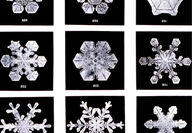Sorted by date Results 1 - 10 of 10
Climate is always changing. That’s one truth that stands out from the record around the world of natural samples of Earth materials, of tree rings, ice layers, and so much more. But how much has past climate change influenced human affairs? In anthropology it’s been relatively commonplace to look at the twists and turns of ancient human history and assign at least some major population collapses to climate change. It certainly stands to reason that climate stress may have impacted early human populations — the only real...
Think about the most complicated machine you’ve dealt with in the past year. Was it a beeping monitor tethered to a high-tech device in an emergency room? Or was it a super fast computer you used at work? Actually, the most complicated machine you’ve interacted with was the one you used this morning when you switched on a light or plugged in your coffee machine. The entire power grid has to balance supply (generation) and demand (load) on a second by second basis. We take it for granted most of the time, but it’s a marve...
My elderly aunt recently came into some money. She decided — very generously — to send part of it to each of her nieces and nephews. This gave me the task of choosing how I wanted to spend an unexpected $1,000. I decided to buy a new range for my kitchen. I wouldn’t otherwise buy a new appliance, and by spending the money on a range I will be able to remember my aunt and bless her name each night as I cook supper. My old range was electric. The oven was slow and the burners were constantly problematic. I replaced all the burn...
When you fill your tank, you likely see a little sticker on the pump saying part of the fuel is ethanol. Ethanol is a biofuel, which means it comes from plants like corn, rather than from fossil fuel — ancient carbon that’s been buried within the Earth for millions of years. Producing more biofuels is on the agendas of governments and private industry alike. Biofuels can potentially help nations become more energy independent. If a country can grow plants and produce biofuels from them, that nation could potentially import le...
My mother lives with me and I’m involved in her medical care. She’s a tough cookie. But like many 88-year-olds, she has several health problems. We visit her doctor at least once a month to report what’s working and what isn’t doing the trick. Recently the doctor ordered blood work that showed she was low in vitamin D. So now I’ve added vitamin D tablets to her daily medication regime. In the summer our bodies produce vitamin D when sunlight strikes our skin. But during the dark winter months, that source of vitamin D dries u...
By Dr. E. KIRESTEN PETERS Contributor Every time I fill my gas tank, I see the notice on the pump that explains part of the fuel I’m buying is ethanol. Ethanol is alcohol, a type of biofuel rather than fossil fuel. While biofuels can be good to promote national energy independence and possibly help with greenhouse gas emissions, the ethanol in our gasoline is made from corn. (The starch in the corn is broken down into sugars that are then fermented into alcohol.) With corn ethanol, we are essentially putting food into our g...
There are two main things most people would like to know about particular volcanoes: when is the next eruption and how big will that eruption be? Scientists in Iceland have taken another step forward in monitoring volcanoes to best predict when they will erupt and even warn people of the size of the coming eruption. In May 2011, a volcano in Iceland named Grímsvötn erupted. It generated a 12-mile-high plume of volcanic debris that temporarily grounded airplanes as far away as Great Britain. The problem wasn’t as great, tho...

Those of us living in the northern half of the country can be forgiven for being tired – at this stage of winter – of shoveling snow. I enjoy the brightness snow can bring to dark winter days, but I'm getting old enough that shoveling the walk in front of my house has very little appeal even though it's good for me to do some honest work before I head into my desk job. I've now hired a man to plow my driveway and I feel fortunate to have that service – even though it means...
One of the things my mutt from the pound and I like to do together is go on long walks. Sometimes on weekends Buster Brown and I stroll at the bottom of the Snake River Canyon where dogs can be off-leash (as Mother Nature intended). There’s a six-mile walk in the canyon we like to do: me limping along in a straight line, Buster ranging over a wider area of ground sniffing for wildlife. Closer to home, there is a six-mile loop around town we enjoy. I think I can speak for both of us when I say that we simply feel better a...
Late in the last century scientists published reams of data about Earth’s climate derived from ice cores taken from Greenland and Antarctic. By drilling down into the polar ice with hollow bits, workers were able to pull columns of ice up to the surface. The material brought to light in this way was very special for several reasons. First, the ice cores show annual layers going back in time. That means scientists can count backwards through time from the surface downward, a bit like school kids counting the rings of a t...